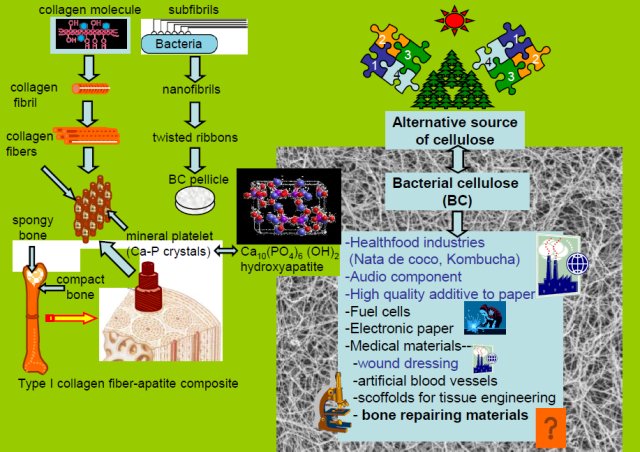As the primary component of plant cell wall, cellulose is the most abundant biopolymer on earth recognized as the major component of plant biomass, but also a representative of microbial extracellular polymer synthesized by some bacteria. The major resources of all cellulose products such as construction materials, textile, paper, etc., for industrial purpose are usually obtained from cotton and wood. In the era of declining forests, global climate changes, continuing expansion of industrialization with our increased population, an importance of green properties such as biodegradability and favorable CO2 balance grows with the awareness of consumers, scientists, engineers, and industrial partners for sustainability in the use of materials. While maintaining the sound environment by sustainable ways of using forest resources, it should be also considered the consequences of an alternative source of cellulose.
In this study, the ultrafine bacterial cellulose (BC) microfibrils network structure with its native unique properties is exploited to search the possibility of fabricating materials analogy to natural bone. The ability of apatite (bone mineral) formation on the surface of BC microfibrils network in a simulated body fluid (SBF) has been observed in our recent study. The biodegradability of BC in human body, however, cannot be achieved because of the lack of enzyme to degrade cellulose though BC is biocompatible. To overcome this limitation, extended research has being carried out to tailor BC as a novel class of biodegradable bone repairing material by biofunctionalization. The formation of chitin-like biopolymers by direct bacterial incorporation of N-acetylglucoasmine (chitin monomer) may bridge the properties of the respective homopolymers, cellulose and chitin. The latter is known to be hydrolyzed by lysozyme, an enzyme with anti-bacterial action that is found in body fluids.
The apatite forming ability on biofunctionalized BC and its biodegradability will be investigated. The ultimate goal is designing, modifying and characterizing new generation of bacterial cellulose based composite materials/biomaterials having applications promising for making peoples’ life better not only limited to biomedical fields.



